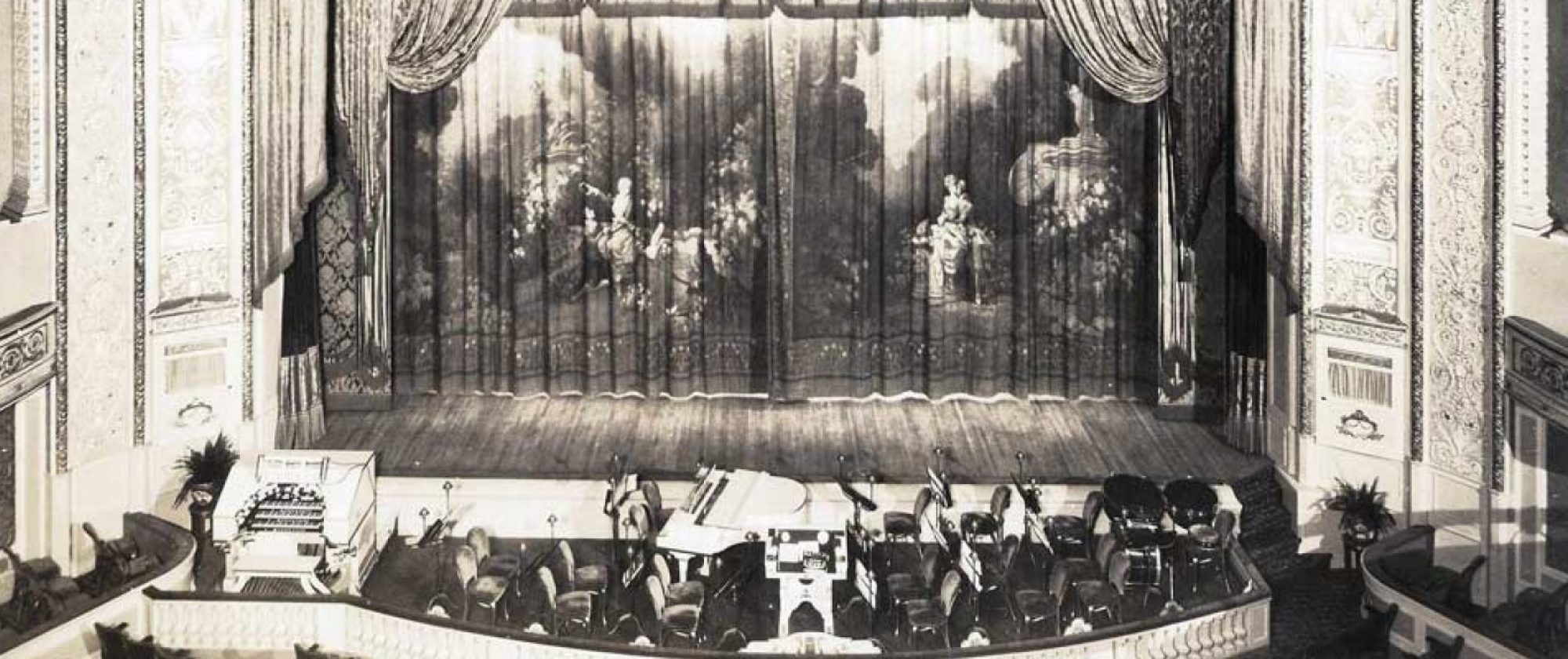“Party of the First Part.”
The turn has a black face comedy talk routine, Jackson doing the manager to La France’s comedy as a near boxer. Instead of stepping as formerly in the act, Jackson has a ballad and the men duet with a popular number at the close. This number works to a good exit, the crowing of a chicken Interesting both boys. La France pulls forth a meal sack from his hip pocket. They open it and sneak for the “bird.” Some of the chatter can go out* there being sufficient comedy material to stand pruning in the mid section. Looks good for the better houses.
18 Mins
Miss Whistler’s turn has a jazz band setting, though the routine of songs hardly explains why. At the opening she had a lyric mentioning the individual musicians. After that the singer offered numbers of the ballad school, the band accompanying, also, having two numbers of their own. The cornet is displayed clarity and power in one of them. The pianist announced Miss Whistler, who is a tall, good-looking auburn type, in a medley of her musical comedy successes, meaning the songs she formerly had in production. This was offered for the finale. The act closed the show well, but minus the kick needed for the better houses. It was overtime for the spot.
Trained Pony.
11 Mins.; Full.
Man in bed snoring. Wife enters and informs audience he has been out all night. Man awakes. Some crossfire. Pony who has been concealed beneath the bed clothes appears. Pony is bone of contention In domestic wrangle Which follows. A travestied drama with the pony as the hero wrestling with and ejecting the villain It the finish.
10 Mins. One.
A male pianist is carried to accompany the artist’s vocal efforts. Opening in a pretty evening gown, Misa Kean opens with a classical number, exhibiting a cultured soprano. A popular number follows with a ballad next, followed by “Somewhere.” The singer has a good voice but lack* the experience, delivery and personality to get by in the big time houses. For the three a day she would get more by deleting the classical offerings entirely. Just another voice and piano.
9 Mins.; Full Stage.
Well appearing woman does straight with dwarf providing comedy falls and knockabout for laughs. Excellent number for opening, but scarcely a satisfactory turn further along in the show as it was placed at the American. Pair have a good opening, the dwarf being concealed behind the newspaper he is reading and making his appearance as a surprise. The combination of the rather tall woman and the miniature partner —he Is well under four feet—gives opportunity for odd maneuvers in their duet skating. Woman dresses neatly in black and white frock of soubret length and is graceful on the rollers. For a finish the dwarf take* an apparatus in his teeth and with that hold is whirled around by the woman, an acrobatic performance which gets them satisfactory exit applause.
19 Mins. Full Stage. (Special Set).
A cyclorama with side and back openings, backed by a black drop are the stage dressings. A Jazz band conventionally grouped about the piano at the rise of the curtain, with the sisters entering through the center opening… Nothing punchy is included and the musicians are the average jazz aggregation minus specialists. It qualifies as just another pleasing dancing act.
“My Lady’s Face.”
19 Mins.
Full Stage.
Edgar Allan Woolf is the author of Miss Busley’s new playlet The sketch is founded on an original theme, but is written atrociously and constructed so amateurishly no one but a capable player of Miss Busley’s ability could save it from degenerating into broad farce. Miss Busley is the center of the story which revolves around a nurse who has fallen in love with an aviator during the war. The nurse is back in civil life selling shirtwaists. She is afraid youth is slipping away and decides upon a face lifting operation. The doctor Is a former lover whom she rejected… Miss Busley and her three supporting players gave a commendable performance, but a sketch doctor should be called in consultation immediately.
“Putting It Over” presented by Sarah Padden and a cast of three men, is a melodramatic sketch, be- ginning in a manner that compels interest, and through subsequent rapid-fire developments holds the closest attention up to a point near the finish. Here the interest slackens somewhat because of the story becoming a bit vague. This is regrettable because of the excellent qualities of the foregoing action. Darkened stage at the opening. Man in bed. Clock chimes five times. Light streaming through window indicates early morning. Shot is heard off stage. Sounds of excitement, muffled babel of voices outside. Man Jumps out of bed. Woman (Miss Padden) rushes into room. Occupant (the man) hides her under bed. Cop rushes into room. He’s after the woman. Man successfully stalls the cop, while woman slips under coat on hat rack. Later woman manages to slip into bathroom while cop is looking under bed. Cop off. Woman proceeds to explain why she sought concealment in man’s room.
Two men, one appearing with a violin, the other making his entrance from the audience. At the start the fiddler handled a classical number in hurried style. He was better with his second try, with a dash of double string melody about the only distinction to his playing. After starting a third number, a “wop” character interrupted, complaining of the ragtime selection and finally coming on the stage.
“Widow by Proxy”
Miss Robinson plays the widow role In a polished manner, denoting schooling In the legit. The male lead is convincingly handled, as well as the other male role, with the two additional women, especially the character woman, handling their parts well. The young woman playing the ingénue role is somewhat miscast. “Widow by Proxy” with Its present cast can fill the bill, in a sketch position.
